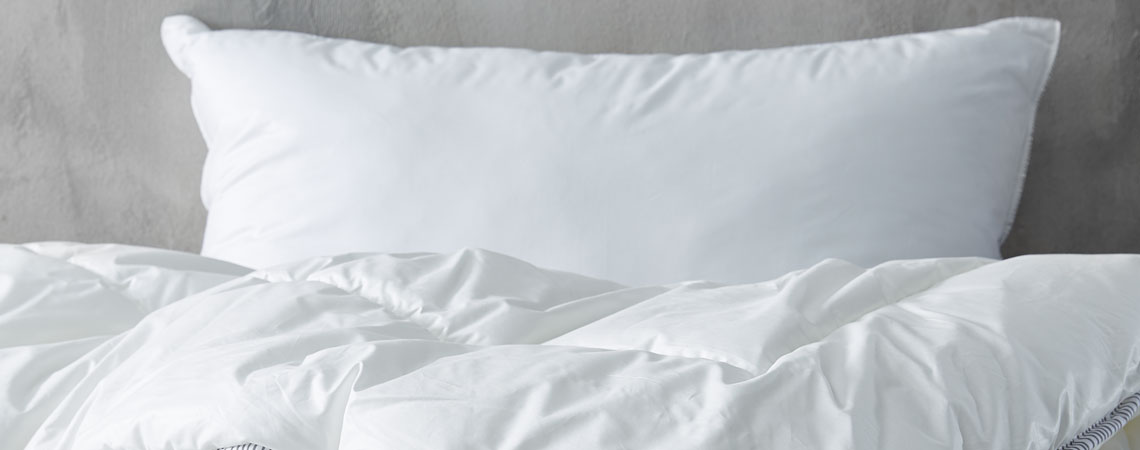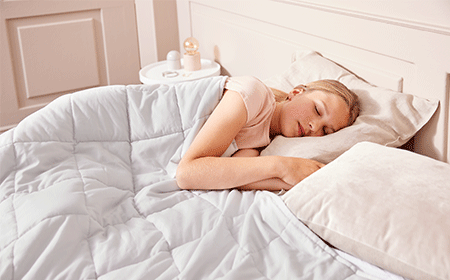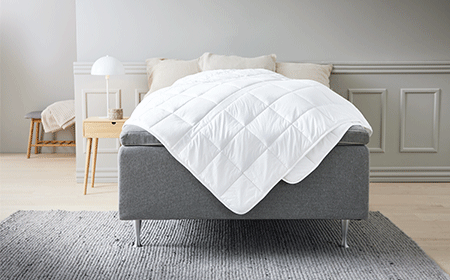We spend a lot of time in bed, therefore it is important to have the right bedding. When it comes to duvets, you can pick from a range of sizes and choosing the right one can be a challenge. Here you can see the dimensions of the most typical sizes of duvets:
Duvet: Size Guide
| Name | Size |
|---|---|
| Baby | 67x100 cm |
| Junior | 100x140 cm |
| Single | 135/140x200 cm |
| Extra long single | 135/140x220 cm |
| Double | 200x220 cm |
| King size | 240x220 cm |
| Super king size | 260x220 cm |
Duvets are available in many sizes
Duvets for adults can vary in length and width, often remaining in a standard length or perhaps being a little bit longer. For some time, the most popular duvet has been 135x200 cm, but more and more people now prefer to choose a duvet with a little bit extra length - 220 cm in total, so that your feet stay nice and warm during the night.
What size duvet should I pick?
The duvet must be at least 20-30 cm longer than your height, as an example, if you're shorter than 170 cm tall, then a 200 cm duvet is appropriate for you. If your duvet is too short, you will most likely freeze your feet or your upper body, depending on where the duvet covers you. In the end, a wrong choice may result in a bad quality of sleep and you will wake up tired and with no energy.
How wide should my duvet be?
A single duvet must be at least 30 cm wider than your chest size to cover you. A double duvet must be as wide as the mattress that you and your partner sleep on. Remember to consider if you have the same sleeping habits before buying a double duvet - otherwise you may end up stealing the duvet from one another during the night. It's also important to consider the levels of thickness (or tog) of your duvet, and it it suits both parties.
What duvet material should I choose?
Both filling and fabric are available in many different materials. Natural filling usually consists of down and feathers, but can also consist of silk, cotton or wool. Natural filling is breathable, falls nicely around your body and has the best isolating abilities. A second option is a fibre duvet which can be just as comfortable. It is always best to try a duvet in one of our stores, before you commit to buying.
Down, feathers and carrying capacity
Down and feathers typically come from geese or moscovy ducks. Down duvets are preferred by many people because they feel like "real" duvets. Most down duvets rated in terms of the so-called "filling power" or “tog”. This describes the quality and distribution of the down and feathers, and how well the duvet looks after being compressed. The filling power ranges from 2 to 16, 16 isolating the most.
The ideal duvet has a perfect combination of high filling power and heaviness. The more down that the duvet contains, the higher the filling power. The more feathers that are in the duvet, the heavier it is.
Read our Guide to maintaining your duvet and pillows.




